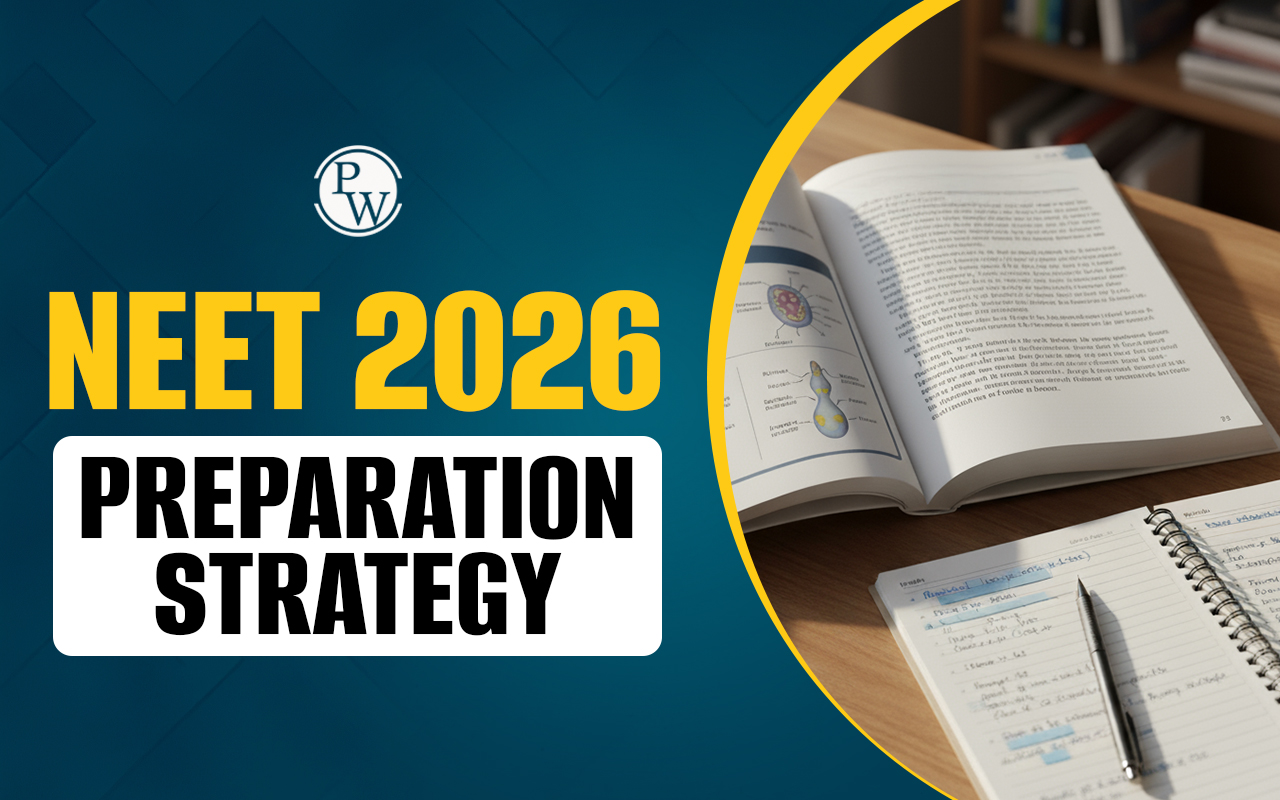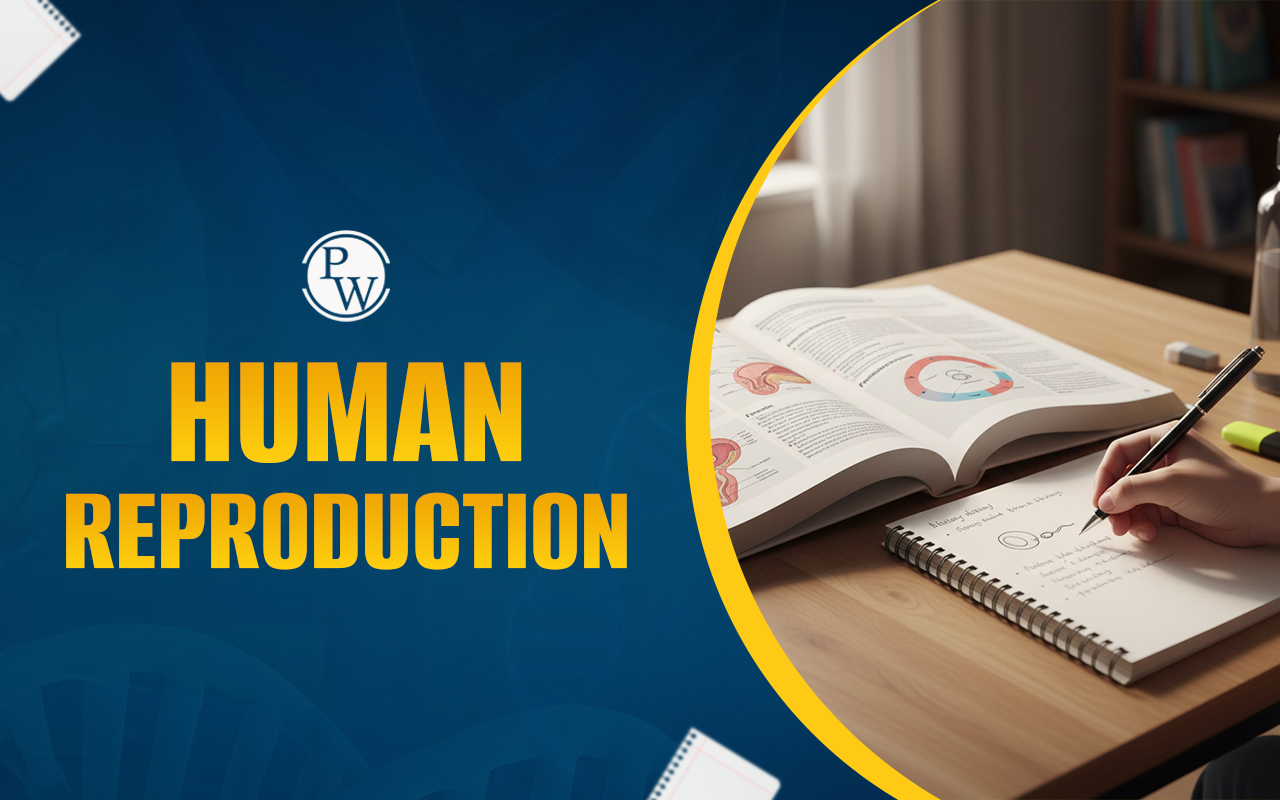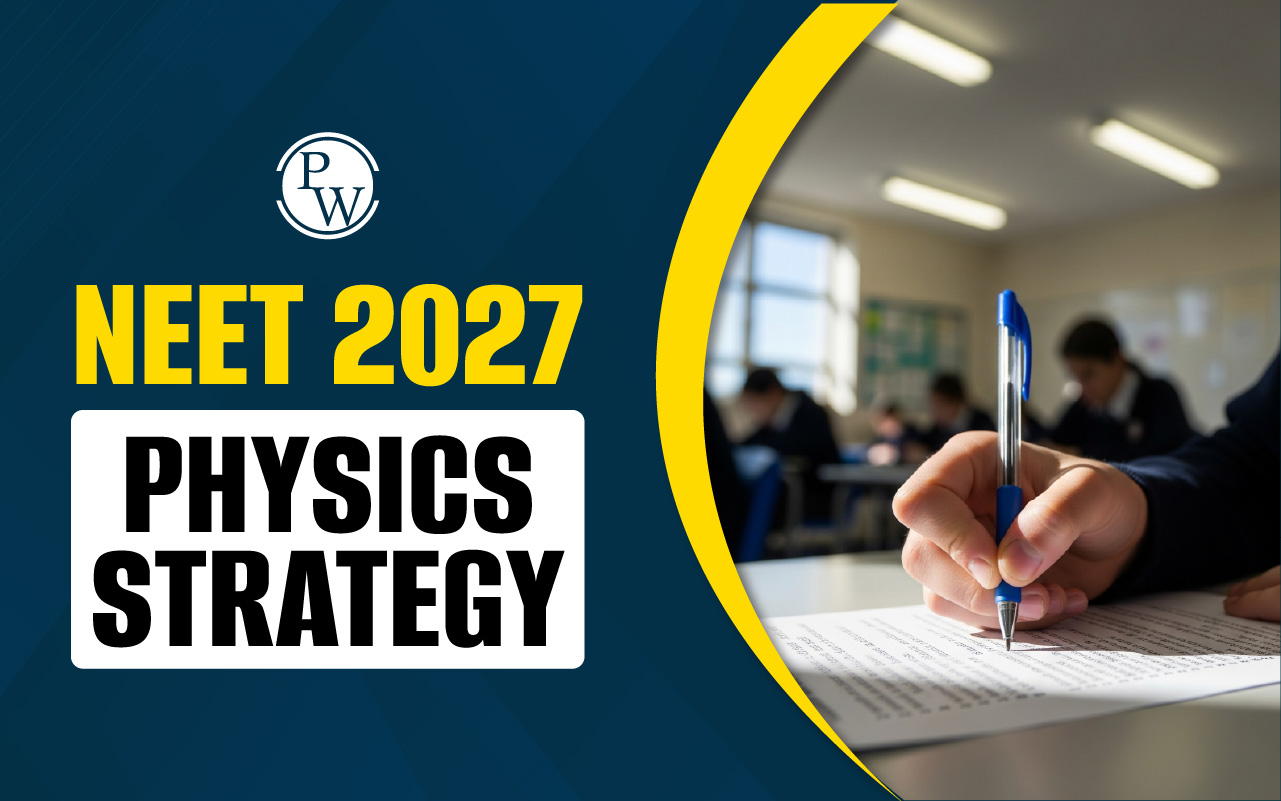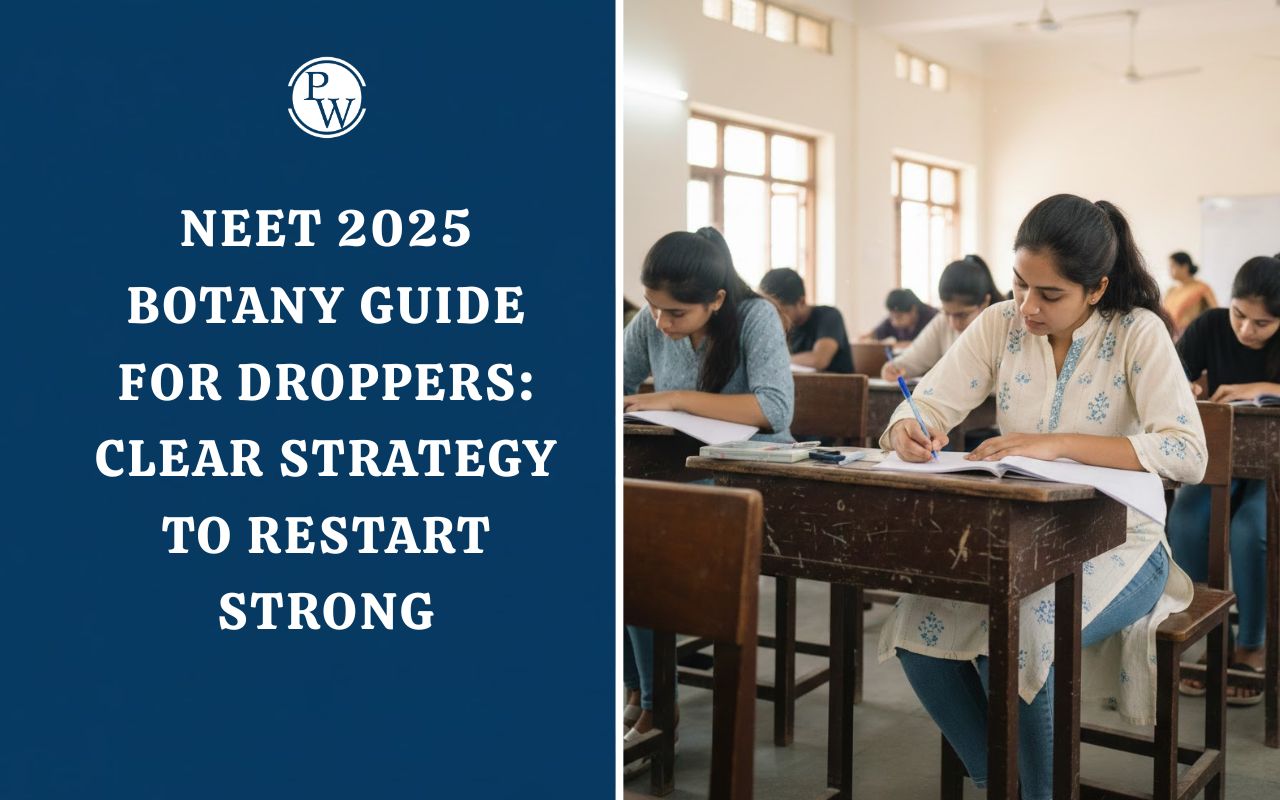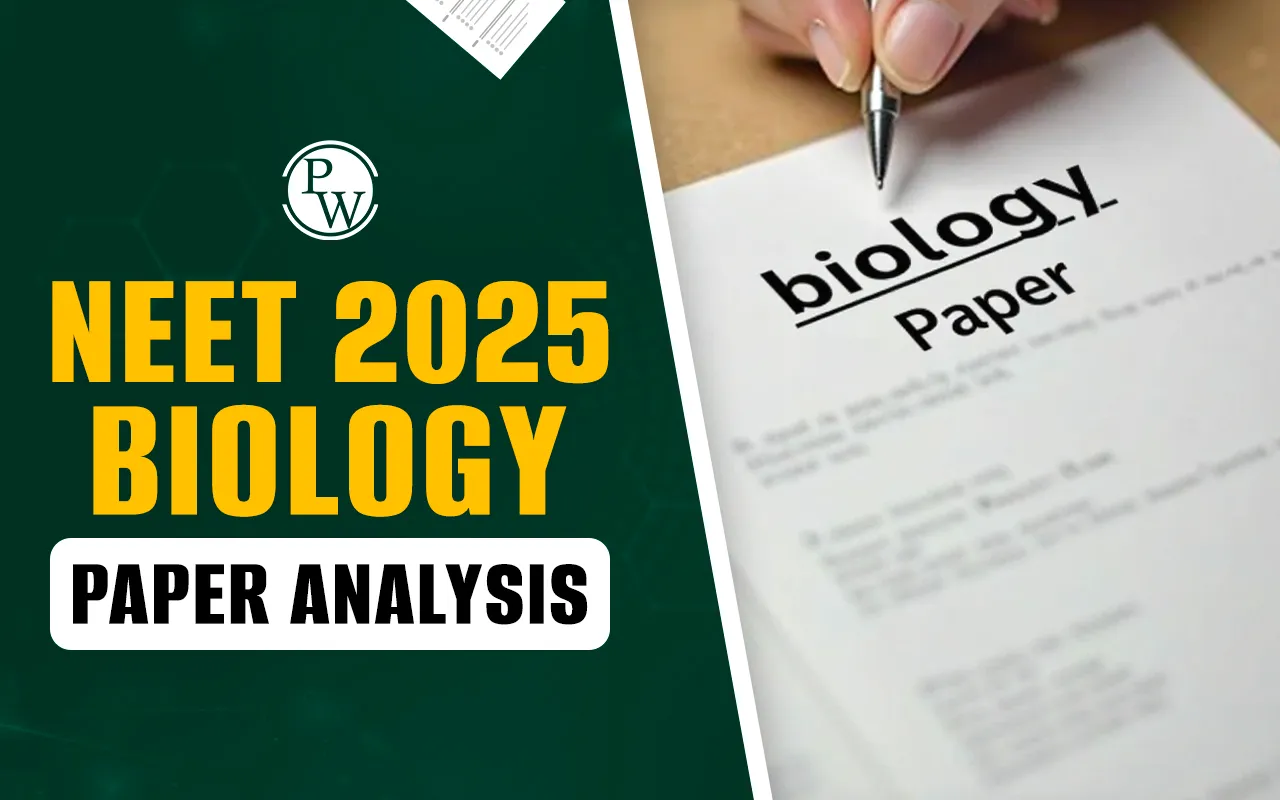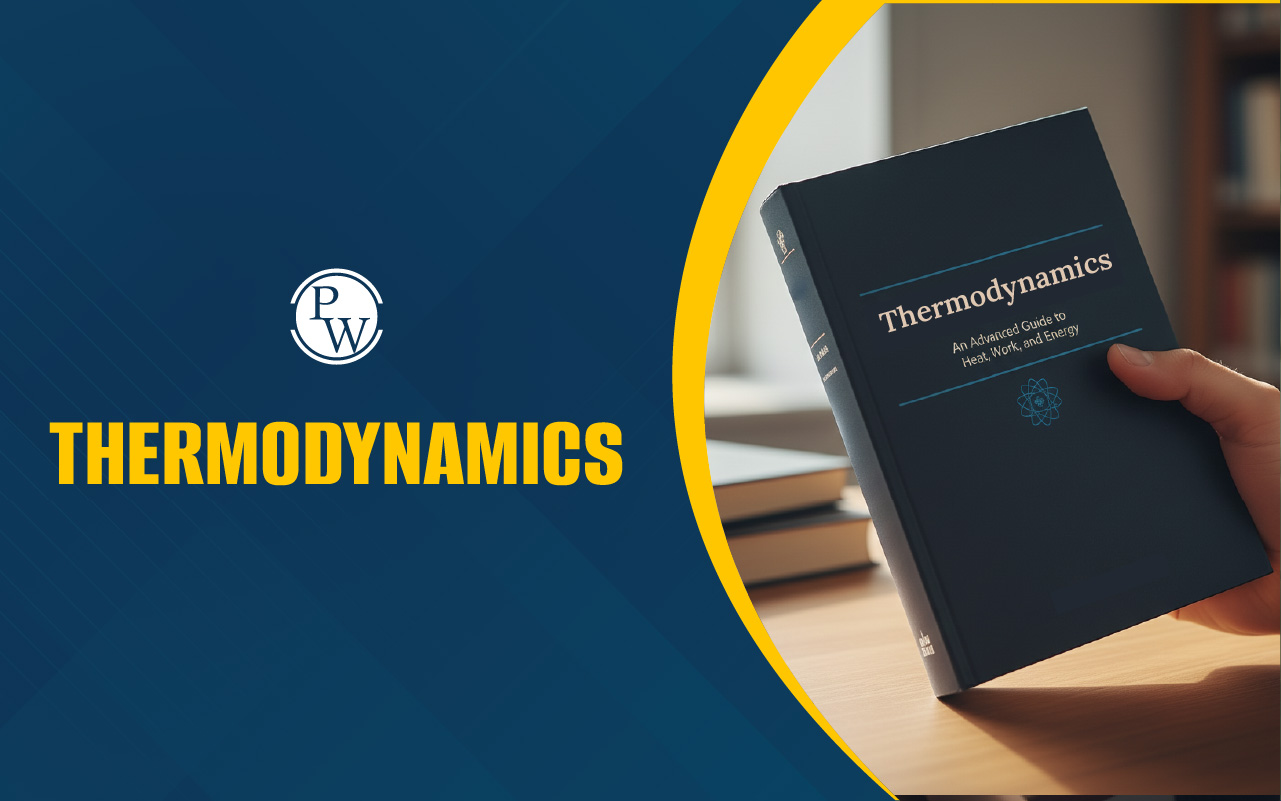
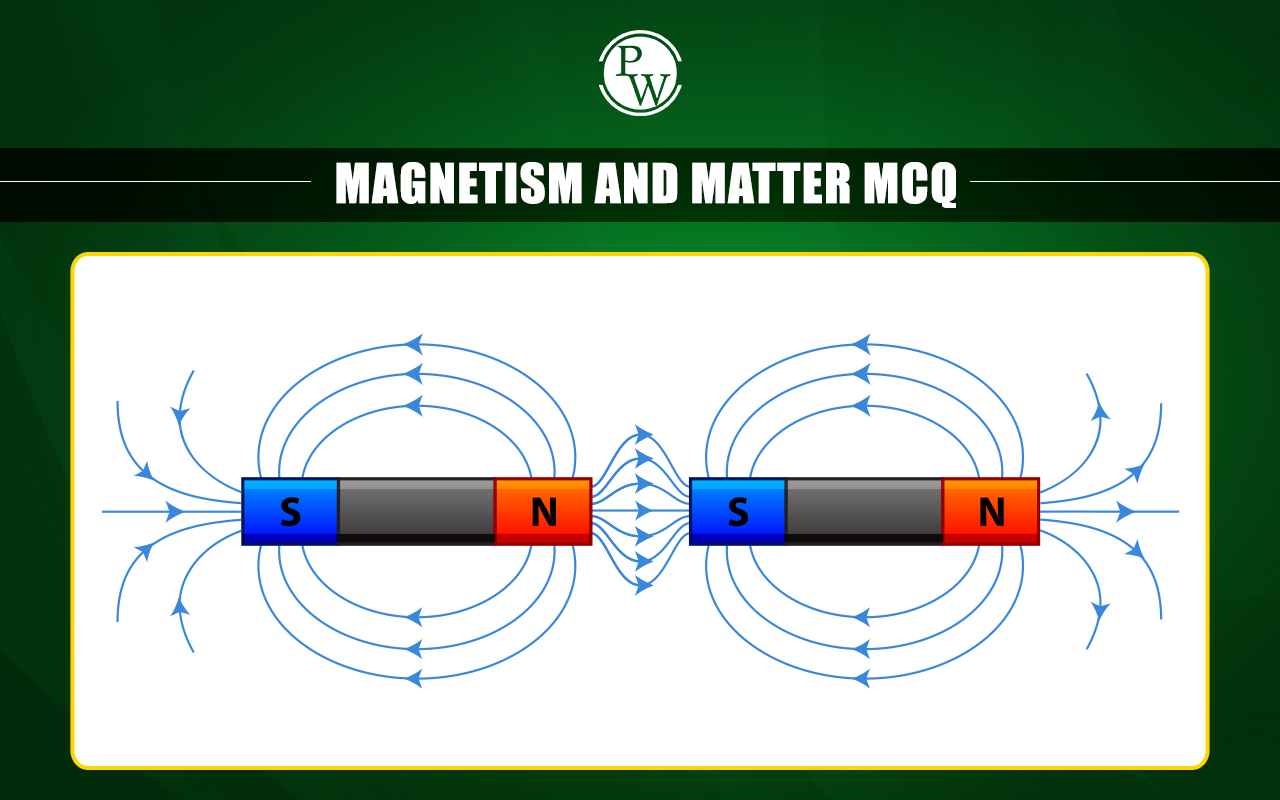
Magnetism and Matter MCQs: Class 12 Physics Chapter 5, Magnetism and Matter, is an important chapter in the NEET Physics syllabus . Mastering the concepts in this chapter will help students perform well in both their board exams and NEET. This chapter focuses on understanding the properties of magnets, magnetic fields, and the behavior of materials in magnetic fields. To aid in preparation, we have provided a detailed overview of Magnetism and Matter MCQs that can help students build a strong grasp on the topic.
Magnetism and Matter MCQs Questions
Magnetism and Matter is a scoring chapter in NEET Physics chapter-wise weightage , covering important topics like Earth's magnetism, magnetic properties of materials, magnetic dipoles, and magnetic susceptibility. Practicing MCQs on this subject helps students strengthen their understanding of these core concepts, which frequently appear in the NEET exam. Solving these questions not only improves problem-solving skills but also ensures effective preparation, giving students the confidence to tackle related questions during the test.Magnetism and Matter Class 12 MCQs
For Class 12 students, practicing MCQs on Magnetism and Matter is essential for strengthening their grasp of key concepts. These MCQs provide a variety of questions that help students test their knowledge and prepare for both board exams and NEET. By focusing on solving different types of questions, students can better understand complex concepts such as magnetization, magnetic fields due to current-carrying conductors, and the Earth's magnetic field.NEET MCQs on Magnetism and Matter
For NEET aspirants, focusing on Magnetism and Matter MCQs is essential, as this chapter holds significant weightage in the NEET Physics syllabus. These questions closely align with the type of problems seen in the exam, making them highly beneficial for thorough preparation. Regular practice of these NEET-specific MCQs helps students enhance their understanding, speed, and accuracy—crucial factors for excelling in the competitive exam. Mastering this chapter can significantly improve overall performance and boost scores in the NEET exam . The following are a few tips for solving NEET Physics MCQs on Magnetism and Matter:- Start with basic concepts before tackling complex problems.
- Time yourself while solving MCQs to improve speed.
- Review incorrect answers to understand mistakes.
- Practice daily to retain concepts and improve accuracy.
Q 1. Magnetic lines of force inside a bar magnet;
(1) are from the north pole to the south pole of the magnet. (2) do not exist. (3) depend upon the area of the cross-section of the bar magnet. (4) are from the south pole to the north pole of the magnet.Ans. 4
Q 2. Choose the correct statement.
(1) Electric lines of force are closed curves while magnetic lines are not. (2) Magnetic lines of force are closed curves while electric lines are not. (3) Both electric and magnetic lines of force are closed curves. (4) Neither electric nor magnetic lines of force are closed curves.Ans. 2
Q 3. Which of the following points lies in the region of the highest magnetic field strength?
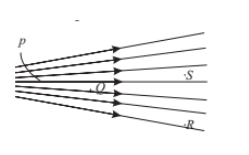 (1) P
(2) Q
(3) R
(4) S
(1) P
(2) Q
(3) R
(4) S
Ans. 1
Q 4. Statement-I: A freely suspended magnet points along a north-south direction.
Statement-II: Earth behaves as a magnet.
(1) Statement-I and Statement-II both are correct. (2) Statement I is correct but Statement II is incorrect. (3) Statement I is incorrect but Statement II is correct. (4) Statement-I and Statement-II both are incorrect.Ans. 1
Q 5. A large magnet is broken into two pieces so that their lengths are in the ratio 2: 1. The pole strengths of the two pieces will have a ratio;
(1) 2: 1 (2) 1: 2 (3) 4: 1 (4) 1: 1Ans. 4
Q 6. If a magnet of pole strength m is divided into four parts such that the length and width of each part is half that of the initial one, then the pole strength of each part will be;
(1) m/4 (2) m/2 (3) m/8 (4) 4 mAns. 2
Q 7. The ratio of magnetic intensities for an axial point and a point on the broad side-on position at an equal distance d from the center of the magnet will be, or The magnetic field at a distance d from a short bar magnet in longitudinal and transverse positions are in the ratio;
(1) 1: 1 (2) 2 : 3 (3) 2: 1 (4) 3: 2Ans. 3
Q 8. The work done in rotating a bar magnet of magnetic moment M from its unstable equilibrium position to its stable equilibrium position in a uniform magnetic field B is;
(1) 2MB (2) MB (3) –MB (4) –2MBAns. 4
Q 9. A 250-turn rectangular coil of length 2.1 cm and width 1.25 cm carries a current of 85 mA and is subjected to a magnetic field of strength 0.85 T. Work done for rotating the coil by 180° from stable equilibrium;
(1) 9.4 mJ (2) 4.55 mJ (3) 2.3 mJ (4) 1.15 mJAns. 1
Q 10. Assertion (A): Gauss’s law of magnetism is different from that of electrostatics.
Reason (R): Isolated magnetic poles are not known to exist.
(1) Both Assertion (A) and Reason (R) are true and Reason (R) is the correct explanation of Assertion (A). (2) Both Assertion (A) and Reason (R) are true but Reason (R) is not the correct explanation of Assertion (A). (3) Assertion (A) is true and Reason (R) is false. (4) Assertion (A) is false and Reason (R) is true.Ans. 2
Q 11. A bar magnet is held perpendicular to a uniform magnetic field. If the couple acting on the magnet is to be halved by rotating it, then the angle by which it is to be rotated is;
(1) 30° (2) 45° (3) 60° (4) 90°Ans. 3
Q 12. The pole strength of a bar magnet is 48 ampere-metre and the distance between its poles is 25 cm. The magnitude of the couple by which it can be placed at an angle of 30° with the uniform magnetic intensity of flux density 0.15 Newton/ampere-meter will be;
(1) 12 Newton × metre (2) 18 Newton × metre (3) 0.9 Newton × metre (4) None of theseAns. 3
Q 13. A magnetic needle is kept in a non-uniform magnetic field. It may experience;
(1) neither a force nor a torque. (2) a torque but not a force. (3) a force but not a torque. (4) a force and a torque.Ans. 4
Q 14. A magnetic dipole in a constant magnetic field has;
(1) maximum potential energy when the torque is maximum. (2) zero potential energy when the torque is minimum. (3) zero potential energy when the torque is maximum. (4) minimum potential energy when the torque is maximum.Ans. 3
Q 15. Statement-I: The magnetic field lines also represent the lines of force on a moving charged particle at every point.
Statement II: A bar magnet exerts torque on itself due to its own field.
(1) Statement-I and Statement-II both are correct. (2) Statement I is correct but Statement II is incorrect. (3) Statement I is incorrect but Statement II is correct. (4) Statement-I and Statement-II both are incorrect.Ans. 4
Q 16. Force between two identical bar magnets whose centers are r meter apart is 4.8 N when their axes are in the same line. If separation is increased to 2r, the force between them is reduced to;
(1) 2.4 N (2) 1.2 N (3) 0.6 N (4) 0.3 NAns. 4
Q 17. The magnet of a vibration magnetometer is heated so as to reduce its magnetic moment by 19%. By doing this the periodic time of the magnetometer will;
(1) increase by 19% (2) decrease by 19% (3) increase by 11% (4) decrease by 21%Ans. 3
Q 18. The period of oscillations of a magnet is 2 sec. When it is remagnetised so that the pole strength is 4 times, its period will be;
(1) 4 sec (2) 2 sec (3) 1 sec (4) 1/2 secAns. 3
Q 19. The relative permeability of a material is 25, then its susceptibility is;
(1) 24 (2) 26 (3) 5 (4) 625Ans. 1
Q 20. The unit of magnetic susceptibility is;
(1) Weber (2) Weber per meter (3) henry (4) It is unitlessAns. 4
Q 21. The universal property of all substances is;
(1) Diamagnetism (2) Ferromagnetism (3) Paramagnetism (4) All of theseAns. 1
Q 22. The variation of the intensity of magnetization (I) with respect to the magnetizing field (H) in a diamagnetic substance is described by the graph;
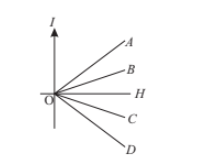 (1) OC
(2) OD
(3) OA
(4) OB
(1) OC
(2) OD
(3) OA
(4) OB
Ans. 1
Q 23. The magnetic susceptibility of a paramagnetic material at –73°C is 0.0015 . Its value at –173°C will be;
(1) 0.0045 (2) 0.0030 (3) 0.0075 (4) 0.015Ans. 2
Q 24. Liquid oxygen remains suspended between two pole faces of a magnet because it is;
(1) Diamagnetic (2) Paramagnetic (3) Ferromagnetic (4) Anti-ferromagneticAns. 2
Q 25. Domain formation is a necessary feature of;
(1) Diamagnetism (2) Paramagnetism (3) Ferromagnetism (4) All of theseAns. 3
Q 26. Susceptibility of a magnetic substance is found to depend on temperature and the strength of the magnetising field. The material is a;
(1) Diamagnet (2) Ferromagnet (3) Paramagnet (4) SuperconductorAns. 2
Q 27. The hysteresis curve is studied generally for;
(1) Paramagnetic material (2) Diamagnetic materials (3) Ferromagnetic materials (4) All of theseAns. 3
Q 28. For the ferromagnetic materials, in the given graph, choose the suitable condition for electromagnet;
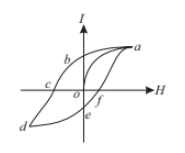 (1) ob should be large, oc should be small.
(2) ob should be small, oc should be large.
(3) Both oc and ab should be large.
(4) Both oc and ob should be small
(1) ob should be large, oc should be small.
(2) ob should be small, oc should be large.
(3) Both oc and ab should be large.
(4) Both oc and ob should be small
Ans. .4
Q 29. The susceptibility of a substance at 500 K is –0.00004. Its susceptibility at 1000 K is;
(1) –0.00004 (2) –0.00002 (3) –0.00003 (4) –0.00001Ans. 2
Q 30. In a permanent magnet, at room temperature;
(1) the individual molecules have non-zero magnetic moment. (2) The magnetic moment of each molecule is zero. (3) domains are partially aligned. (4) both (1) & (3) are correct.Ans. 4
Q 31. For diamagnetic material, which of the following statement is wrong?
(1) An atom has zero dipole moment in the absence of an external magnetic field. (2) Diamagnetism is universal property. (3) Magnetic susceptibility decreases with temperature. (4) Superconductors are diamagnetic materials.Ans. 3
Q 32. The hysteresis curve for the material of the electromagnet is;
(1) Short and wide (2) Tall and narrow (3) Tall and wide (4) Short and narrowAns. 4
Q 33. The magnetic susceptibility is negative for;
(1) Paramagnetic and ferromagnetic materials. (2) Diamagnetic material only. (3) Paramagnetic material only. (4) Ferromagnetic material only.Ans. 2
Q 34. There are four light-weight-rod samples; A, B, C, D separately suspended by threads. A bar magnet is slowly brought near each sample and the following observations are noted;
(i) A is feebly repelled. (ii) B is feebly attracted. (iii) C is strongly attracted. (iv) D remains unaffected.Which one of the following is true?
(1) A is of a non-magnetic material. (2) B is of a paramagnetic material. (3) C is of a diamagnetic material. (4) D is of a ferromagnetic material.Ans. 2
Q 35. Electromagnets are made of soft iron because soft iron has; [AIPMT (Prelims)-2010]
(1) High retentivity and low coercive force. (2) Low retentivity and high coercive force. (3) High retentivity and high coercive force. (4) Low retentivity and low coercive force.Ans. 4
Q 36. Above Curie temperature; [AIPMT (Prelims)-2006]
(1) a ferromagnetic substance becomes paramagnetic. (2) a paramagnetic substance becomes diamagnetic. (3) a diamagnetic substance becomes paramagnetic. (4) a paramagnetic substance becomes ferromagnetic.Ans. 1
Q 37. If a diamagnetic substance is brought near the north or the south pole of a bar magnet, it is; [AIPMT (Prelims)-2009]
(1) repelled by the North Pole and attracted by the South Pole. (2) attracted by the North Pole and repelled by the South Pole. (3) attracted by both the poles. (4) repelled by both the poles.Ans. 4
Q 38. Nickel shows ferromagnetic properties at room temperature. If the temperature is increased beyond Curie temperature, then it will show; [AIPMT (Prelims)-2007]
(1) diamagnetism (2) paramagnetism (3) anti ferromagnetism (4) no magnetic propertyAns. 2
Q 39. A diamagnetic material in a magnetic field moves;
(1) from stronger to the weaker parts of the field. (2) from weaker to the stronger parts of the field. (3) perpendicular to the field. (4) in none of the above directions.Ans. 1
Q 40. The magnetic susceptibility of diamagnetic materials is;
(1) positive and very small. (2) positive and very high. (3) negative and very small. (4) negative and very high.Ans. 3
Q 41. Permanent magnets show;
(1) high coercivity and low retentivity. (2) low coercivity and low retentivity. (3) low coercivity and high retentivity. (4) high coercivity and high retentivity.Ans. 4
Q 42. Soft iron is used in many parts of electrical machines for;
(1) low hysteresis loss and low permeability. (2) low hysteresis loss and high permeability. (3) high hysteresis loss and low permeability. (4) high hysteresis loss and high permeability.Ans. 2
Q 43. The area of the B-H curve measures the energy loss;
(1) by the specimen. (2) per unit volume of the specimen. (3) per unit volume per cycle of the specimen. (4) per cycle of the specimen.Ans. 3
Q 44. The magnetic susceptibility of a paramagnetic material at –73°C is 0.0075. Its value at –173°C will be;
(1) 0.0045 (2) 0.0030 (3) 0.0075 (4) 0.015Ans. 4
Q 45. The magnetic susceptibility of a paramagnetic material at –23°C is 0.0015. Then its value at –123°C is;
(1) 0.0015 (2) 0.00025 (3) 0.0025 (4) 0.00015Ans. 3
How to Solve Magnetism and Matter MCQs?
To effectively solve Magnetism and Matter MCQs, follow these steps:- Understand key concepts and formulas.
- Focus on the question and identify what’s being asked.
- Use relevant equations for calculations.
- Narrow down choices by ruling out incorrect options.
- Solve various problems to get familiar with question types.
- Learn from mistakes and understand correct approaches.
Magnetism and Matter MCQs FAQs
Why are Magnetism and Matter MCQs important for NEET preparation?
How do Magnetism and Matter MCQs help Class 12 students?
What should Class 12 students focus on when practicing Magnetism and Matter MCQs?
How important is the Magnetism and Matter chapter in the NEET Physics syllabus?
Where can students find MCQs with solutions on Magnetism and Matter?


